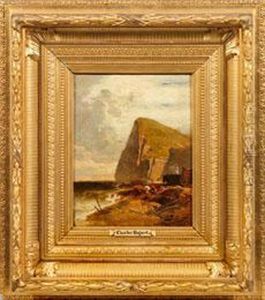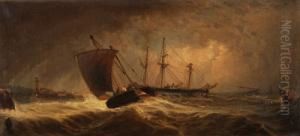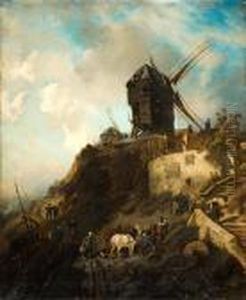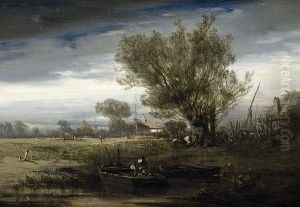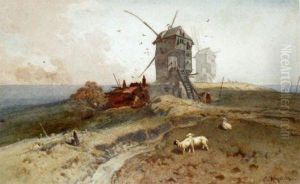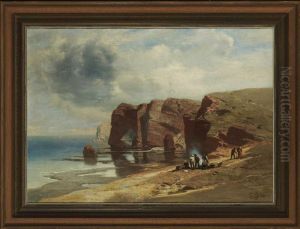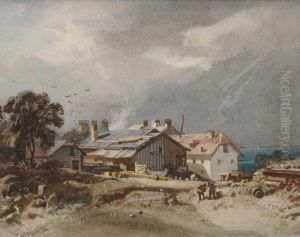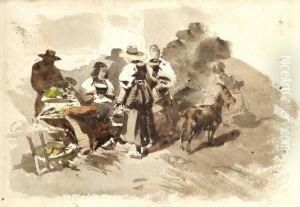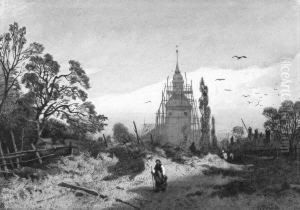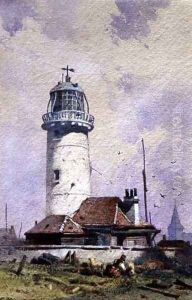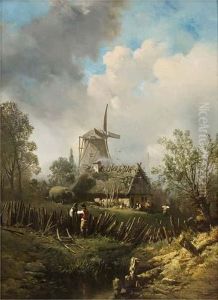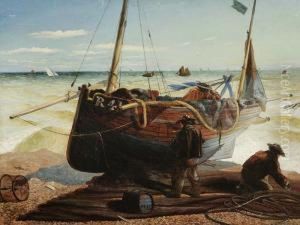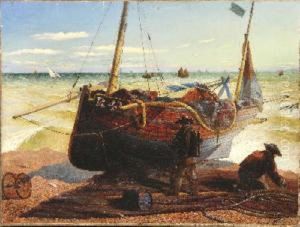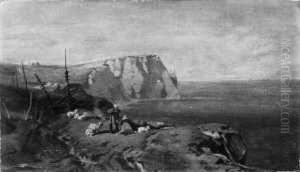Charles Hoguet Paintings
Charles Hoguet was a 19th-century German-French painter known for his landscape and marine paintings, as well as his architectural and historical scenes. Born on December 10, 1821, in Berlin, Germany, he was initially trained by his stepfather, who was an etcher. Hoguet's artistic talents were recognized early, and he went on to study at the Berlin Academy of Arts.
In the early stages of his career, Hoguet was influenced by the Romantic movement, which was evident in his dramatic representations of historical events and his penchant for capturing the sublime in nature. His travels across Europe, particularly to Italy and France, further shaped his artistic style, as he was exposed to various artistic traditions and techniques.
Hoguet's work was characterized by a keen attention to detail and a mastery of light and shadow, which brought his landscapes and seascapes to life. He often depicted scenes of the North Sea and the Baltic Sea, capturing the tumultuous moods of the waters and skies. His historical scenes were carefully researched and executed, with a focus on accuracy and drama.
Despite the quality of his work, Charles Hoguet did not achieve widespread fame during his lifetime. He struggled with financial difficulties and remained relatively unknown outside of certain artistic circles. Nevertheless, he continued to exhibit his work in various salons and exhibitions, where he received some critical acclaim.
Hoguet's life was cut short when he died on August 10, 1870, in Paris, France, at the age of 48. Although he passed away at a relatively young age, Hoguet left behind a substantial body of work that has since been recognized for its contribution to the art of the 19th century. His paintings can be found in various museums and collections, and he is regarded as an important figure in the transition between Romanticism and Realism in European art.


